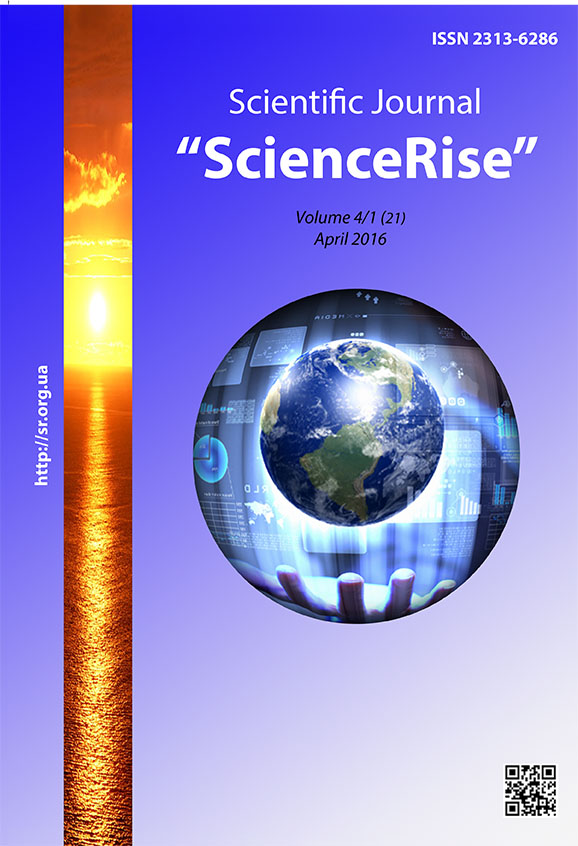Entertainment nature of modern television: prospects and trends
DOI:
https://doi.org/10.15587/2313-8416.2016.66277Keywords:
television, entertainment, TV marketing, talk show, reality show, westernization, McDonaldization, tabloidization, development of post-showAbstract
This article describes trends of the development of entertainment television in Ukraine as westernization, McDonaldization, tabloidization, development of post-show. Westernization is viewed as the process of borrowing commercial formats of entertainment shows from the US and Western Europe. McDonaldization is considered as a process of simplifying program formats. Tabloidization is shown as a process of manipulating the viewer’s attention through lively and provocative announcements of programs. Development of post-show is covered as a process of creating programs that supplement reality shows
References
Akinfiev, S. (2008). Zhanrovaja struktura rossijskogo razvlekatel'nogo televidenija [Genre structure of the Russian entertaining TV]. Moscow, 21. Available at: http://www.mediascope.ru/old/node/250
Blavatskyi, S. (2007). Tabloidyzatsiia yakisnoi presy u Velykobrytanii [Tabletitle quality press in the UK]. Visnyk of the Lviv University, Series Journalism, 30, 91–102.
Zhukov, S. G. (2009). Realiti-shou v sociokul'turnom prostranstve massovoj kul'tury [Reality show in the socio-cultural space of mass culture]. Krasnodar, 21.
Mitchuk, O. (2013). Tok-shou v ukrainskomu efiri yak konfliktohenne seredovyshche [Talk show broadcast in Ukrainian as conflict environment]. Tele- ta radiozhurnalistyka, 12, 340–345. Available at: http://nbuv.gov.ua/UJRN/Tir_2013_12_62
Nabokova, H. (2013). Katehorii doslidzhennia televiziinoi vydovyshchno-rozvazhalnoi kultury [Categories study television spectacular entertainment culture]. Kul'tura Ukrai'ny, 41. Available at: http://www.ic.ac.kharkov.ua/RIO/kultura41/23.pdf
Nevmerzhytska, O. V. (2006). Rozvazhalni prohramy tsentralnykh kanaliv telebachennia Ukrainy yak chynnyk moralnoho vykhovannia pidlitkiv [Entertainment Television channel central Ukraine as a factor in the moral education of teenagers]. Kherson, 20.
Tsymbalenko, Ye. S. (2013). Tabloidyzatsiia mediakomunikatsii [Tabletitle media communications]. Naukovi zapysky Instytutu zhurnalistyky, 50, 206–211. Available at: http://nbuv.gov.ua/UJRN/Nzizh_2013_50_42
Yusypovych, A. V. Typy prohram rozvazhalnoho telebachennia Ukrainy [Types of TV entertainment programs Ukraine]. Elektrona biblioteka Instytutu zhurnalistyky. Available at: http://journlib.univ.kiev.ua/index.php?act=article&article=2122
Shcherbyna, Yu. V. (2013). Porivnialna kharakterystyka rozvazhalnykh shou na telekanalakh SShA ta Ukrainy [Comparative characteristics of entertainment shows on TV US and Ukraine]. Naukovi zapysky Instytutu zhurnalistyky, 51, 96–100. Available at: http://www.library.univ.kiev.ua/ukr/host/viking/db/ftp/univ/nz_ij/nz_ij_2013_51.pdf
Cheremnykh, I. V. Reitynhovi metodyky marketynhovykh doslidzhen televiziinoi audytorii Ukrainy [Rating methods of marketing research of television audience Ukraine]. Elektrona biblioteka Instytutu zhurnalistyky. Available at: http://journlib.univ.kiev.ua/index.php?act=article&article=1550
Terentieva, M. (2015). Ukrainske telebachennia u konteksti suchasnykh svitovykh mediatendentsii (na prykladi telekanalu STB) [Ukrainian television in the context of the current global mediatendentsiy (for example STB)]. Zhurnalistyka, 14, 139–149. Available at: http://nbuv.gov.ua/UJRN/zhur_2015_14_15
Lubska, V. V. (2010). Vymir kulturnoi vesternizatsii v Ukraini [Measuring cultural westernization in Ukraine]. Problemy mizhnarodnyh vidnosyn, 8, 72–81.
Ritcer, D. (2011). Makdonal'dizacija obshhestva 5 [McDonaldization of society 5]. Moscow: Praksis, 592.
Shcherbyna, Yu. (2015). Zhanrovi osoblyvosti rozvazhalnykh prohram ukrainskoho telebachennia [Genre features entertainment Ukrainian TV]. Tele- ta radiozhurnalistyka, 14, 253–259. Available at: http://journ.lnu.edu.ua/vypusk7/n14/tv14-34.pdf
Downloads
Published
Issue
Section
License
Copyright (c) 2016 Андрій Олександрович Недо

This work is licensed under a Creative Commons Attribution 4.0 International License.
Our journal abides by the Creative Commons CC BY copyright rights and permissions for open access journals.
Authors, who are published in this journal, agree to the following conditions:
1. The authors reserve the right to authorship of the work and pass the first publication right of this work to the journal under the terms of a Creative Commons CC BY, which allows others to freely distribute the published research with the obligatory reference to the authors of the original work and the first publication of the work in this journal.
2. The authors have the right to conclude separate supplement agreements that relate to non-exclusive work distribution in the form in which it has been published by the journal (for example, to upload the work to the online storage of the journal or publish it as part of a monograph), provided that the reference to the first publication of the work in this journal is included.

